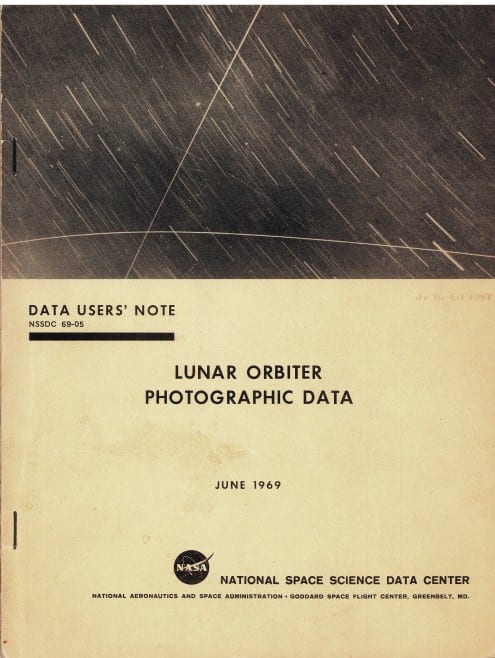Mapping the Apollo landing sites
By Oli Usher, on 29 September 2014
 Apollo 11, which touched down in the Sea of Tranquility on 20 July 1969 was the first manned landing on the Moon. But prior to the human spaceflight project, NASA explored the Moon with robotic probes. One key element of this endeavour was the Lunar Orbiter programme, which included five spacecraft that mapped almost the entire lunar surface in 1966 and 1967. This was in part in order to identify landing sites for Apollo, but the missions also had broader scientific goals.
Apollo 11, which touched down in the Sea of Tranquility on 20 July 1969 was the first manned landing on the Moon. But prior to the human spaceflight project, NASA explored the Moon with robotic probes. One key element of this endeavour was the Lunar Orbiter programme, which included five spacecraft that mapped almost the entire lunar surface in 1966 and 1967. This was in part in order to identify landing sites for Apollo, but the missions also had broader scientific goals.
Shortly before the first manned landing, NASA published a catalogue of all their data from the Lunar Orbiter programme, entitled Lunar Orbiter Photographic Data. This features maps of the entire Moon, with the locations, sizes and shapes of all Lunar Orbiter photos marked on them, along with extensive technical information.
Today, missions like this work entirely online, but in those pre-internet days, the data had to exist in hard copy.
A copy of this book exists in UCL’s planetary science archives, the NASA Regional Planetary Imaging Facility. Among its pages is the mapping of the area Apollo 11 landed in, the Sea of Tranquility (Mare Tranquilitas here). This is located towards the right of this sheet, where the imaging (marked in red) is densest.
Links
High resolution images
 Close
Close



